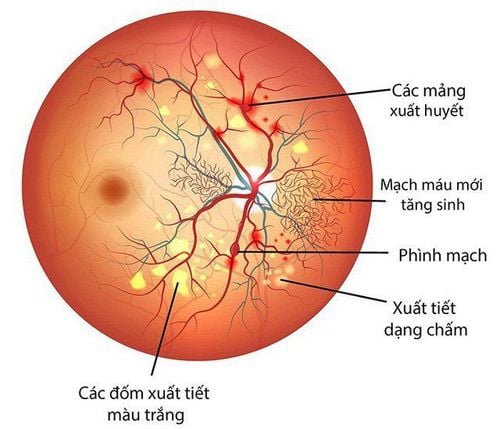This is an automatically translated article.
Cerliponase alfa is a treatment for late neonatal ceroid lipofuscinosis type 2 (CLN2) to reduce the rate of progressive motor function decline. The following article provides you with information about the uses and precautions when using Cerliponase alfa.
1. What is Cerliponase alfa?
Cerliponase alfa is an enzyme replacement treatment for a specific form of Batten disease. It is the first FDA-approved treatment to slow walking loss in symptomatic pediatric patients 3 years of age and older with lipofuscinosis ceroidal neuroidal type 2 (CLN2) deficiency. tripeptidyl peptidase-1 (TPP1) deficiency. Intraventricular injection allows significant absorption into the brain. Cerliponase alfa was approved in April 2017 (under the brand name Brineura).
Cerliponase alfa contains the active ingredient tripeptidyl peptidase-1 (rhTPP1), which is a recombinant human lysosomal exopeptidase that removes the N-terminus of tripeptides with broad substrate specificity. Cerliponase alfa slows the decline of motor function caused by abnormal motor signaling in the brain by restoring normal levels and activity of TPP1.
Indications:
Cerliponase alfa is a treatment for late neonatal ceroid lipofuscinosis type 2 (CLN2) to reduce the rate of progressive motor function decline for patients aged 3 years and older. age or older. CLN2 disease is a form of Batten disease, a rare inherited neurodegenerative disorder and is associated with ataxia, seizures, rapid loss of language and motor function, blindness, and possibly early death. It is caused by a deficiency of the enzyme lysosomal tripeptidyl peptidase-1 (TPP1) and leads to the accumulation of lysosomal storage material normally metabolized by this enzyme in the central nervous system. Cerliponase alfa is contraindicated in the following cases:
Any symptoms or signs of acute untreated localized infection, infection around the device site (cellulitis) or abscess); suspected or diagnosed CNS infection (CSF turbid or gram-positive CSF, meningitis). Any acute complications involving intraventricular equipment (eg, leakage, extravasation of fluid, device failure). The patient has a ventricular shunt. Allergy or hypersensitivity to Cerliponase alfa. The safety and effectiveness of the drug have not been adequately studied in children under 3 years of age.
2. Be careful when using Cerliponase alfa
Perform injections using aseptic technique to reduce the risk of infection; The physician should check the scalp condition to ensure that the ventricular access device is not compromised prior to each infusion.
Monitor vital signs before starting infusion, periodically during and after infusion in a healthcare facility.
Electrocardiogram should be monitored during infusion in patients with a history of conduction disturbances, bradycardia, structural heart disease because some patients with CLN2 disease may present with conduction disturbances and heart disease; In patients without cardiac abnormalities, an electrocardiogram should be performed every 6 months.
Hypersensitivity reactions:
Hypersensitivity reactions have been reported during the infusion or within 24 hours of the infusion; monitor the patient during and after the infusion; Inform the patient's family about the signs and symptoms of anaphylaxis. The risks and benefits of reintroduction should be weighed after an anaphylactic reaction. If a decision is made to reinitiate drug therapy after an anaphylaxis has occurred, ensure that properly trained medical personnel and equipment are available for resuscitation during infusion, starting the next infusion with baud rate is about half of the original baud rate. Other complications:
Bacterial meningitis requiring antibiotic treatment and device removal has been reported; Symptoms of infection may not be apparent in patients with CLN2. Collect CSF for cell count and culture before each infusion and when clinically indicated. Do not initiate treatment if there are symptoms of local infection at the device site or around it, such as pain, erythema, exudation, or if CNS infection is suspected or diagnosed (cerebrospinal fluid). turbidity, meningitis, positive CSF gram stain). Physicians should be alert for signs of infection, including meningitis, during treatment and should monitor device placement for signs of infection. Pregnancy and lactation: There are no data on the use of Cerliponase alfa in pregnant women. It is not known whether Cerliponase alfa is excreted in human milk.
3. Side effects when using Cerliponase alfa
Some undesirable effects when using Cerliponase alf a have been reported.
Common:
Fever (71%). Abnormal ECG (71%). Decreased cerebrospinal fluid protein (71%). Vomiting (63%). Epilepsy (50%). Hypersensitivity (46%). Increased cerebrospinal fluid protein (21%). Hematoma (21%). Headache (21%). Irritability (17%). Uncommon:
Device-related infections (8%). Slow heart rate (8%). Feeling restless (8%). Lower blood pressure (8%). Some other side effects when using Cerliponase alfa drug have been reported such as: Bacterial meningitis, tachycardia, diarrhea and rash.
Cerliponase alfa is a treatment for late neonatal ceroid lipofuscinosis type 2 (CLN2) to reduce the rate of progressive motor function decline for patients 3 years of age and older. Cerliponase alfa is only used in medical facilities under the supervision of a specialist, by direct infusion of the drug into the ventricles.
Please dial HOTLINE for more information or register for an appointment HERE. Download MyVinmec app to make appointments faster and to manage your bookings easily.













